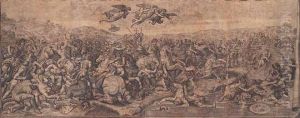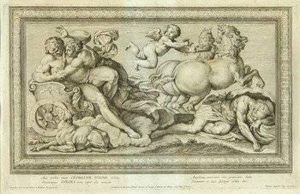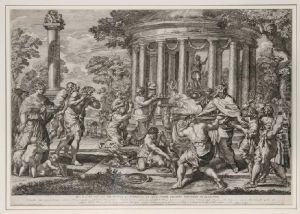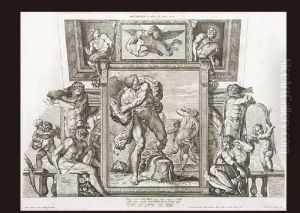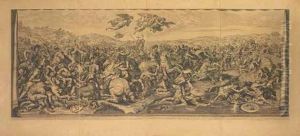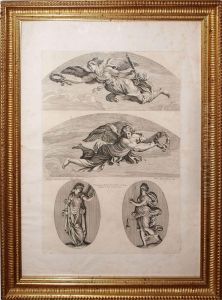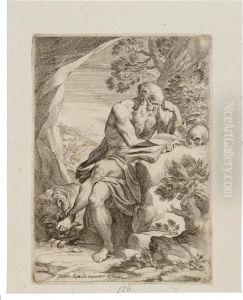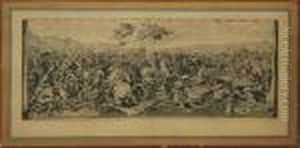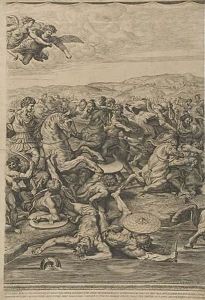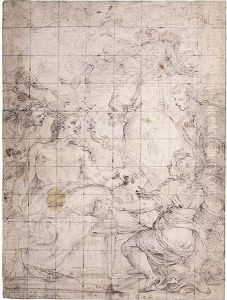Pietro Aquila Paintings
Pietro Aquila was an Italian artist and printmaker, born around 1650 in Palermo, Sicily. Although specific details about his early life and education remain somewhat obscure, it is known that he was active during the late 17th century, a period marked by the Baroque movement in art, which influenced his style and approach to printmaking. Aquila was not only a prolific printmaker but also an accomplished painter, though his prints are what he is most remembered for today.
Aquila moved to Rome, which was then the heart of the Baroque artistic world. In Rome, he became involved with the circle of artists and patrons that defined the era. His work often involved the creation of prints after the designs of famous painters of his time, such as Annibale Carracci and Raphael. This practice was common in the period, serving both to disseminate the artists' works more broadly and to celebrate their designs. Aquila's prints were known for their detail, precision, and the ability to capture the essence of the original paintings.
Among his notable works are the series of prints illustrating the life of Alexander the Great, based on the paintings by Charles Le Brun, a leading French Baroque artist of the time. These works exemplify Aquila's skill in translating the dynamism and drama of Baroque painting into the medium of engraving.
Pietro Aquila's contributions to the field of printmaking were significant in the context of the Baroque period's visual culture. His works helped to spread the grandeur and the detailed narrative style of Baroque art beyond the borders of Italy and France, making them accessible to a wider European audience. Despite his talent and contributions, detailed records of his life are scant, and he remains a somewhat enigmatic figure in the history of art. Pietro Aquila died in 1692 in Rome, leaving behind a legacy that, while not as widely recognized as some of his contemporaries, is cherished among connoisseurs of Baroque printmaking.
